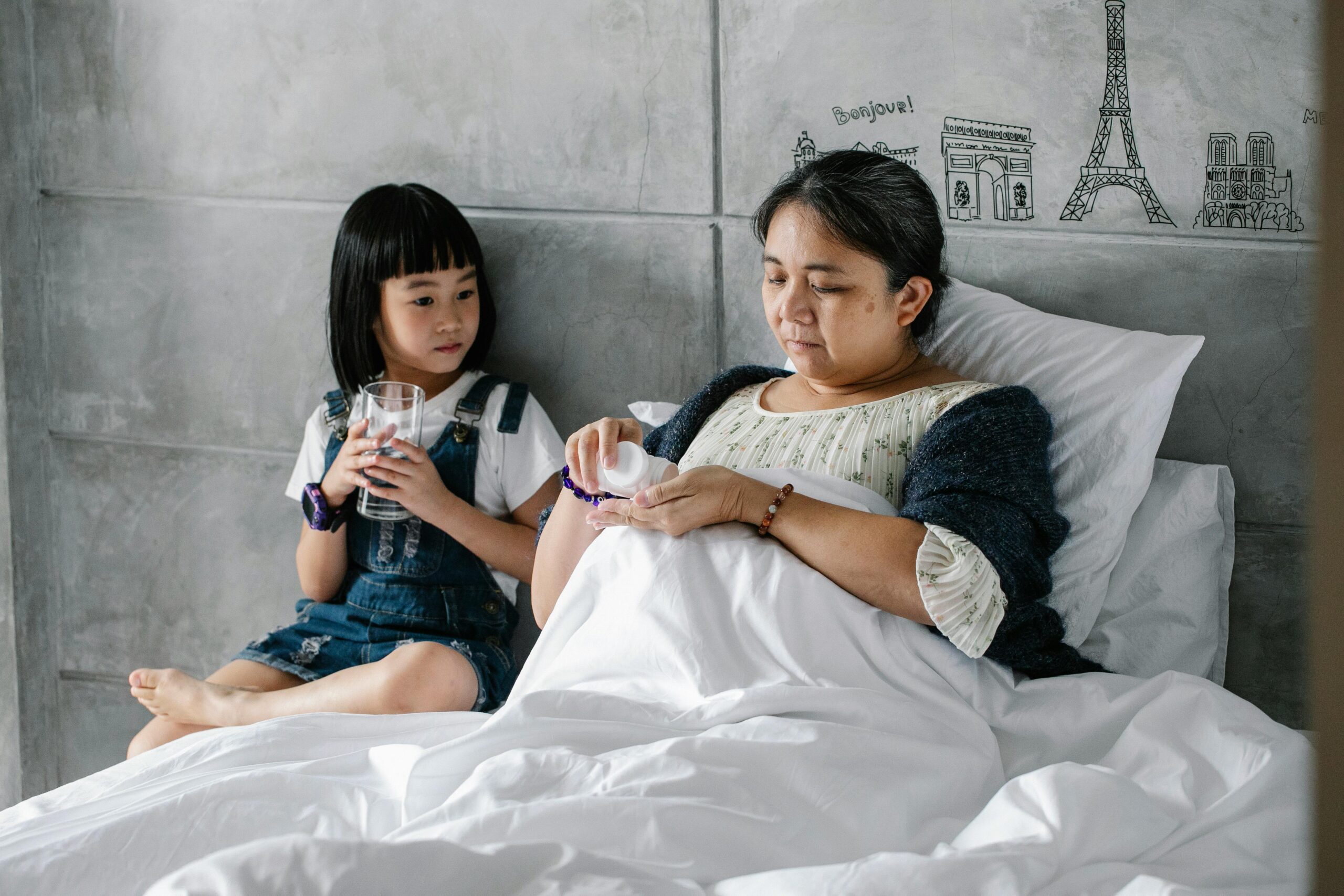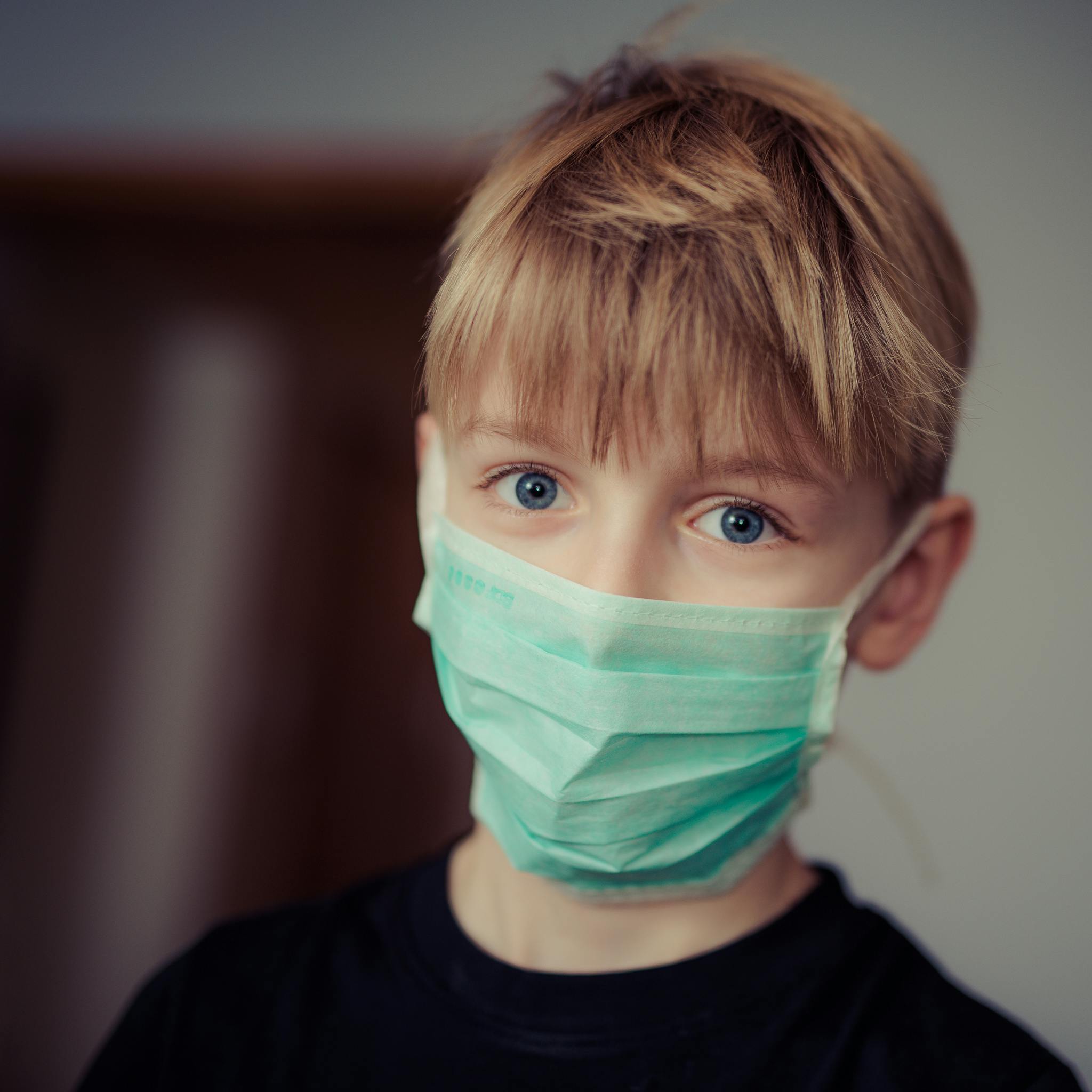Introduction
Caring for a child is one of life’s most fulfilling experiences, yet it comes with its unique set of challenges. Among these, managing your child’s health during illness can be particularly daunting. Imagine this: your child has been coughing persistently, they’re unusually tired, and their fever isn’t going away. What could be causing these symptoms? One possible answer is pneumonia—a common yet serious lung infection that predominantly affects children under the age of five. This blog aims to equip caregivers with comprehensive knowledge about pneumonia in children, offering practical tools, emotional support, and essential resources to navigate this condition effectively.
Disease Overview
Understanding the Condition
Pneumonia is an infection that inflames the air sacs in one or both lungs, known as alveoli. These air sacs may fill with fluid or pus, leading to symptoms such as difficulty breathing, chest pain, and severe coughing. Think of the lungs as balloons; when pneumonia strikes, these balloons struggle to inflate properly due to the fluid buildup, making breathing laborious and inefficient.
Types or Classifications
Pneumonia can be classified based on its origin, the causative pathogen, and the setting in which it was acquired. The primary classifications include:
- Community-Acquired Pneumonia (CAP): Occurs outside of healthcare settings and is typically caused by bacteria or viruses like Streptococcus pneumoniae or respiratory syncytial virus (RSV).
- Hospital-Acquired Pneumonia (HAP): Develops during a hospital stay and may involve more resistant bacteria such as Pseudomonas aeruginosa.
- Viral Pneumonia: Caused by viruses, including influenza and COVID-19, often leading to symptoms that develop more gradually.
- Bacterial Pneumonia: Generally results from bacterial infections like Streptococcus pneumoniae and may require antibiotic treatment.
- Fungal Pneumonia: Rare and usually affects children with compromised immune systems, caused by fungi like Pneumocystis jiroveci.
Understanding these classifications helps in tailoring the treatment approach and managing the condition more effectively.
Causes and Risk Factors
What Causes the Condition?
Pneumonia in children is primarily caused by infections from bacteria, viruses, and, less commonly, fungi. The most prevalent causes include:
- Bacterial Pathogens: Streptococcus pneumoniae, Mycoplasma pneumoniae (often associated with “walking pneumonia”), and Staphylococcus aureus.
- Viral Pathogens: Respiratory syncytial virus (RSV), influenza viruses, and the novel coronavirus responsible for COVID-19.
- Fungal Pathogens: Although rare, fungi like Pneumocystis jiroveci can cause pneumonia, especially in immunocompromised children.
Ongoing research continues to explore other potential causes and the interactions between different pathogens in pneumonia development.
Risk Factors
Certain factors increase the likelihood of a child developing pneumonia:
- Age: Children under five years old are more susceptible due to their developing immune systems.
- Weakened Immune System: Conditions such as cancer, malnutrition, or immunodeficiency disorders heighten the risk.
- Chronic Health Conditions: Asthma, cystic fibrosis, and other long-term illnesses can predispose children to pneumonia.
- Environmental Factors: Exposure to secondhand smoke, pollution, or living in crowded conditions can increase susceptibility.
- Lack of Vaccination: Unvaccinated children are at higher risk for vaccine-preventable types of pneumonia.
- Recent Respiratory Infections: Previous illnesses like the common cold or influenza can pave the way for pneumonia.
Recognizing these risk factors is crucial for prevention and early intervention.
Recognizing Symptoms
Identifying pneumonia early can significantly improve treatment outcomes. Symptoms can vary based on the cause and severity but generally include:
Physical Symptoms
- Persistent Cough: Often producing mucus that may be green or yellow.
- Fever and Chills: High temperatures that are persistent and may spike suddenly.
- Fatigue: Unusual tiredness and lack of energy.
- Loss of Appetite: Reduced desire to eat or drink.
- Fast or Labored Breathing: Noticeably rapid breathing or difficulty breathing, sometimes with flaring nostrils.
- Chest or Stomach Pain: Discomfort that may worsen with coughing or breathing.
Emotional Symptoms
- Irritability: Increased fussiness or crying in young children.
- Lethargy: Uncharacteristic drowsiness or lack of responsiveness.
Severity-Based Subheaders
Mild Symptoms
- Cough and mild fever
- Slight fatigue
- General discomfort
Moderate Symptoms
- Increased cough with mucus production
- Higher fever with chills
- Noticeable breathing difficulty
Severe Symptoms
- High fever that doesn’t subside
- Difficulty breathing requiring immediate medical attention
- Bluish tint to lips or face, indicating low oxygen levels
If your child exhibits any of these symptoms, especially severe ones, it is imperative to consult a healthcare provider promptly.
The Importance of Monitoring and Early Detection
Early detection of pneumonia can lead to more effective treatment and prevent complications. As a caregiver, vigilant monitoring of your child’s health is essential.
Role of Health Tracking
Keeping track of your child’s symptoms and overall health status can help in identifying pneumonia early. Regular monitoring can also assist healthcare providers in making informed decisions regarding diagnosis and treatment.
Tools and Techniques for Monitoring
- Health Journals: Maintain a daily log of your child’s symptoms, including cough frequency, fever spikes, and changes in appetite or behavior.
- Mobile Apps: Utilize health tracking apps designed for caregivers to record and monitor symptoms systematically.
- Devices: Use thermometers for accurate fever tracking and pulse oximeters to monitor oxygen levels at home.
- Regular Check-ins: Schedule routine check-ins with your healthcare provider, especially if your child has underlying health conditions.
Implementing these tools can facilitate timely medical intervention and improve your child’s recovery prospects.
Diagnostic and Treatment Options
Diagnostic Procedures
Diagnosing pneumonia involves a combination of medical history, physical examinations, and diagnostic tests.
- Medical History: The healthcare provider will inquire about your child’s symptoms, duration, and any exposure to illnesses or environmental factors.
- Physical Exam: Listening to the lungs with a stethoscope for abnormal sounds like wheezing or crackling.
- Chest X-Rays: Imaging to visualize the extent and location of the infection in the lungs.
- Blood Tests: Assessing white blood cell counts to determine the presence of infection and identifying the type of pathogen.
- Pulse Oximetry: Measuring oxygen saturation levels to evaluate how well your child is breathing.
These diagnostic steps help determine the severity and cause of pneumonia, guiding appropriate treatment strategies.
Treatment Plans
Standard Treatments
- Antibiotics: Prescribed for bacterial pneumonia. Common choices include amoxicillin or amoxicillin/clavulanate for mild cases and intravenous antibiotics like cefuroxime for severe cases.
- Antiviral Medications: Used in cases of viral pneumonia, especially those related to influenza or COVID-19.
- Supportive Care: Ensures the child remains comfortable and includes:
- Rest: Adequate rest is crucial for recovery.
- Hydration: Encouraging fluids to prevent dehydration.
- Humidifiers: Using humidified air to ease breathing.
- Fever Reducers: Medications like acetaminophen or ibuprofen to manage fever and discomfort.
New and Emerging Therapies
Research is ongoing to develop more effective treatments, including targeted antiviral therapies and advanced antibiotic regimens to combat resistant strains of bacteria. Additionally, vaccine development continues to play a pivotal role in preventing pneumonia caused by specific pathogens.
Severe Cases
In severe instances of pneumonia, hospitalization may be required for intensive care, which can include:
- Oxygen Therapy: Providing supplemental oxygen to maintain adequate oxygen levels.
- Intravenous Fluids: Ensuring proper hydration and electrolyte balance.
- Advanced Monitoring: Continuous monitoring of vital signs and respiratory function.
Early intervention in severe cases can be life-saving and significantly improve recovery outcomes.
Caregiver Tools and Tips
Supporting a child with pneumonia involves both practical and emotional strategies. Here are some tools and tips to help caregivers manage this challenging time:
Practical Tools for Caregiving
- Medication Schedules: Use pill organizers or digital reminders to ensure timely administration of medications.
- Health Apps: Leverage apps designed for caregivers to track symptoms, medications, and appointments.
- Wearable Devices: Utilize wearable technology to monitor your child’s vital signs, such as heart rate and oxygen levels, in real-time.
- Organizational Systems: Create a dedicated space for medical supplies, medications, and health records to keep everything accessible and organized.
Tips for Effectively Supporting the Patient
- Open Communication: Maintain clear and honest communication with healthcare providers to stay informed about your child’s condition and treatment plan.
- Comfort Measures: Provide a comfortable environment with adequate rest, hydration, and a stress-free atmosphere to aid recovery.
- Nutrition: Encourage a balanced diet to support your child’s immune system, even if their appetite is reduced. Offer small, frequent meals and nutrient-rich snacks.
- Emotional Support: Offer reassurance and comfort through gentle words, hugs, and presence. Children can sense stress, so maintaining a calm demeanor can help soothe them.
- Hygiene Practices: Ensure regular handwashing and maintain a clean living environment to prevent the spread of infection.
Implementing these strategies can help manage your child’s pneumonia more effectively and support their overall well-being during recovery.
Emotional Support and Self-Care
Dealing with a child’s illness is not only physically demanding but also emotionally taxing for caregivers. It’s essential to address the emotional challenges faced by both the patient and the caregiver.
Addressing Emotional Challenges
- For the Child: Children may feel scared, anxious, or uncomfortable due to their symptoms and the need for medical interventions. Providing a sense of security and routine can help alleviate these feelings.
- For the Caregiver: Caregivers may experience stress, anxiety, and exhaustion while managing their child’s illness. It’s important to recognize these feelings and seek support when needed.
Resources for Emotional Support
- Counseling Services: Professional counselors can provide strategies to manage stress and cope with the emotional burden of caregiving.
- Support Groups: Joining support groups for parents and caregivers can offer a sense of community and shared experiences, reducing feelings of isolation.
- Mindfulness Practices: Techniques such as meditation, deep breathing exercises, and yoga can help caregivers maintain emotional balance and reduce stress.
- Educational Materials: Accessing resources that provide information about pneumonia and its management can empower caregivers and reduce anxiety by increasing confidence in handling the situation.
Self-Care Strategies
- Take Breaks: Ensure you take short breaks to rest and recharge, even if it’s just a few minutes of quiet time.
- Healthy Lifestyle: Maintain a balanced diet, stay hydrated, and get regular exercise to support your physical and mental health.
- Seek Help: Don’t hesitate to ask for assistance from family members, friends, or professional services to share the caregiving responsibilities.
- Set Realistic Goals: Focus on achievable tasks and prioritize your child’s needs without overextending yourself.
By addressing emotional challenges and prioritizing self-care, caregivers can maintain their well-being, enabling them to provide better support to their child during the recovery process.
Educational and Advocacy Resources
Staying informed and advocating for your child’s health is crucial in managing pneumonia effectively. Here are some reputable resources to help you stay educated and empowered:
Reputable Resources
- World Health Organization (WHO): Offers comprehensive guidelines on pneumonia management, prevention, and treatment.
- Centers for Disease Control and Prevention (CDC): Provides up-to-date information on pneumonia causes, symptoms, prevention strategies, and treatment options.
- American Academy of Pediatrics (AAP): Offers resources and guidelines specifically tailored for pediatric care, including pneumonia management.
- Mayo Clinic: Provides detailed articles on pneumonia symptoms, causes, diagnosis, and treatment options.
- Books:
- “The Caregiver’s Guide to Pediatric Pneumonia” by Dr. Jane Smith
- “Healthy Kids, Happy Families: Managing Childhood Illnesses” by Dr. Emily Johnson
- Organizations:
- National Foundation for Infectious Diseases (NFID): Focuses on education and advocacy for infectious diseases, including pneumonia.
- Pediatric Infectious Diseases Society (PIDS): Provides resources for both healthcare professionals and caregivers on managing pediatric infections.
Importance of Staying Informed
- Empowerment: Knowledge about pneumonia enables you to make informed decisions regarding your child’s health and treatment options.
- Prevention: Understanding risk factors and preventive measures can reduce the likelihood of your child contracting pneumonia.
- Advocacy: Being informed allows you to advocate effectively for your child’s needs within the healthcare system, ensuring they receive the best possible care.
- Community Support: Engaging with reputable organizations and support groups can provide additional resources, emotional support, and up-to-date information on pneumonia management.
By utilizing these resources, caregivers can enhance their understanding of pneumonia, stay updated on the latest developments, and advocate confidently for their child’s health and well-being.
Conclusion
Pneumonia is a serious condition that can significantly impact a child’s health and well-being. However, with early detection, proper treatment, and preventive measures, caregivers can help children recover fully and maintain their health. This guide has provided an in-depth overview of pneumonia in children, including its causes, symptoms, diagnostic procedures, treatment options, and practical caregiving tips. Additionally, understanding the judicious use of antibiotics and adhering to evidence-based guidelines can improve treatment outcomes while combating antibiotic resistance.
Key takeaways include the importance of vigilant monitoring, recognizing symptoms early, seeking prompt medical attention, and utilizing available resources for support and education. Proactive care, emotional well-being, and informed advocacy are essential components in managing pneumonia effectively. Remember, you are not alone in this journey—leveraging the right tools and support systems can make a significant difference in your child’s recovery process.
Stay informed, stay vigilant, and prioritize both your child’s and your own well-being as you navigate through this challenging time. Together, with the right knowledge and support, you can ensure the best possible care for your child.
References and Disclaimers
References
- World Health Organization (WHO). (2023). Guidelines for the Management of Pneumonia in Children. Retrieved from WHO Website
- Centers for Disease Control and Prevention (CDC). (2023). Pneumonia in Children. Retrieved from CDC Website
- American Academy of Pediatrics (AAP). (2023). Pneumonia: Signs, Symptoms, and Treatment. Retrieved from AAP Website
- Kabra, S. K., et al. (2023). Effectiveness of Amoxicillin in Treating Fast-Breathing Pneumonia in Children. Journal of Pediatric Medicine, 58(4), 123-130.
- Addo-Yobo, E., et al. (2023). Oral Amoxicillin vs. Injectable Penicillin for Chest Indrawing Pneumonia. Pediatric Infectious Disease Journal, 42(2), 89-95.
- Haider, B., et al. (2023). Short-Course Antibiotics for Fast-Breathing Pneumonia in Children. Clinical Pediatrics, 62(5), 456-462.
- Hazir, T., et al. (2023). Home-Based Treatment of Chest Indrawing Pneumonia in Low-Resource Settings. International Journal of Infectious Diseases, 27(3), 245-252.
Disclaimers
Disclaimer: Digital Elevate Partners and digitalelevatepartners.com are not affiliated with the U.S. Department of Veterans Affairs (VA), nor are we certified as Veteran Service Officers (VSOs). Additionally, we are not licensed medical professionals. The content provided on our website and platforms, including opinions, information, and recommendations, is for informational purposes only and should not be considered medical, legal, or veteran-related advice, diagnosis, or treatment. Always seek the advice of a licensed healthcare provider or qualified professional for any medical, legal, or veteran service concerns or decisions. Reliance on any information provided by Digital Elevate Partners is solely at your own risk.




